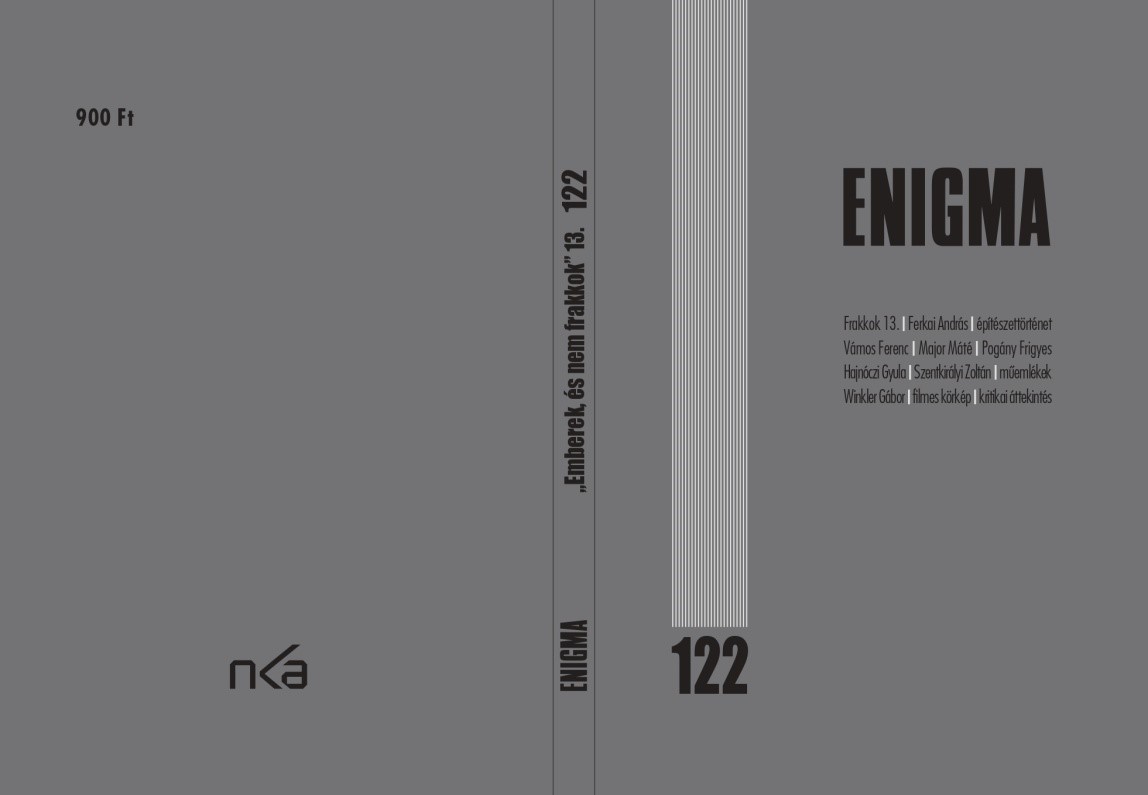For the handbook project, which was developed in collaboration between the BTK Institute of Art History and the Enigma journal, nearly one hundred art historians, including several academics and university professors, have written monographic biographical studies on the great figures of Hungarian art historiography, supplemented with selected bibliographies and short, encyclopedia-style career profiles. One of the greatest undertakings of the Institute of Art History is this well-known handbook of art historiography, series entitled "People, Not Tailcoats: Great Figures in Hungarian Art History Writing". The 13th volume was published in 2025, with the editorial collaboration of András Ferkai.

The handbook which is considered a fundamental work in higher education, has so far only sporadically featured a few architects, yet the reare many architects, who graduated from the University of Technology, who have made significant contributions to the history and theory of architecture in Hungary. This volume includes several leading authorities in the field of architecture: Gyula Hajnóczi and Zoltán Szentkirályi spent their entire careers at the Department of Architectural History at the University of Technology. Hajnóczi was a researcher and teacher of antiquity, while Szentkirályi focused on the Renaissance and, even more so, the Baroque period. Frigyes Pogány also started there, but his inclination and interest in theentire human environment led him to the College of Applied Arts. Gábor Winkler, born in western Hungary, worked in the Győr–Sopron–Pápa triangle, and his work as a designer and teacher tied him to the city of Győr. Máté Major, who became a teacher and theorist in 1949 after working as a practicing architect, rose to a position of authority at the University of Technology and the Hungarian Academy of Sciences. Jenő Rados played a major role in the study of classicism, while Gyula Hajnóczi did the same for the architecture of ancient Pannonia. Frigyes Pogány started from universal architectural history, but emphasized contemporary aspects of spatial perception and spatial effect in his books. Ferenc Vámos was an architect who was interested in Romanticism and the national aspirations of the turn of the century, as well as the life's work of Frigyes Feszl, Ödön Lechner, and Béla Lajta.
The biographical studies in the handbook about these renowned architectural historians and writers were written by such distinguished authors as András Ferkai, Dániel Kovács, János Krählig, András Szalai, Mariann Simon, Tibor Kottmayer, and András Veöreös.
Our Institute’s History of Science Research Group (headed by Csilla Markója) is directing and managing the largest undertaking to date in the historiography of Hungarian art history: the handbook “People, Not Tails.” Great Figures in Hungarian Art Historiography.



